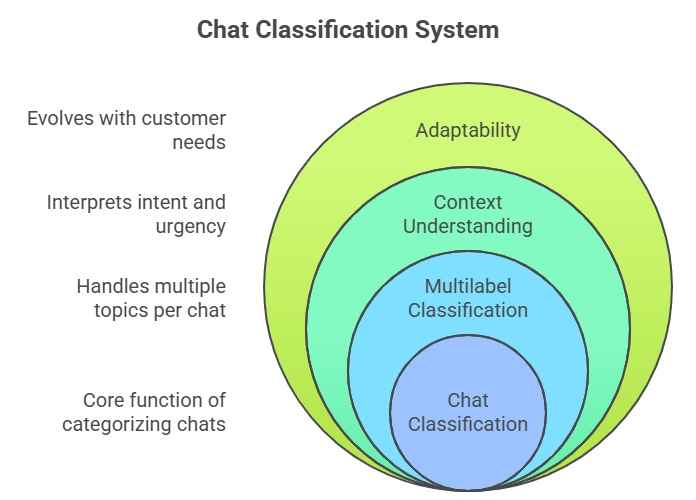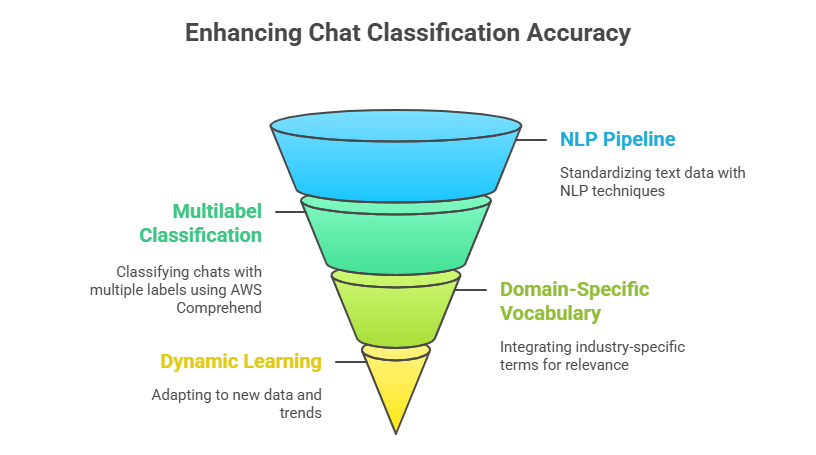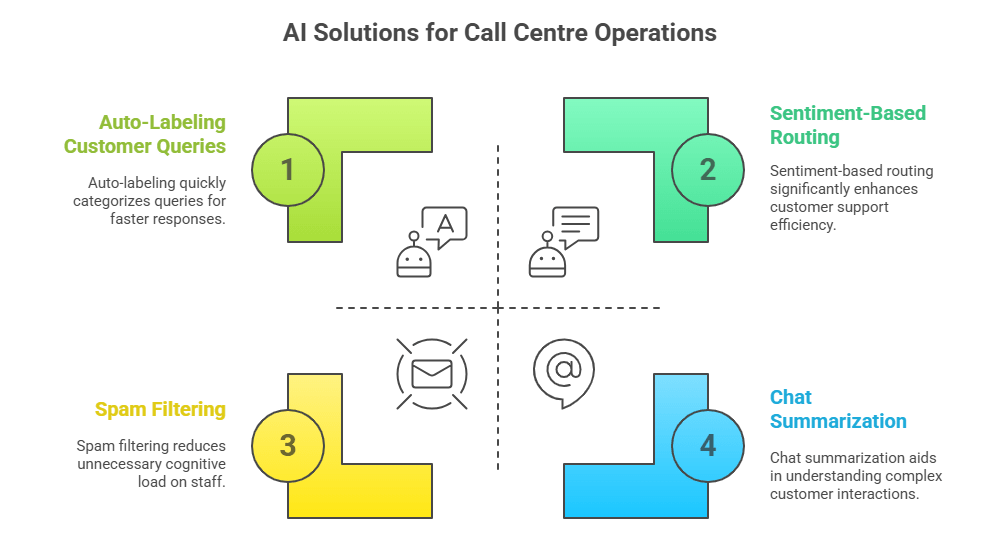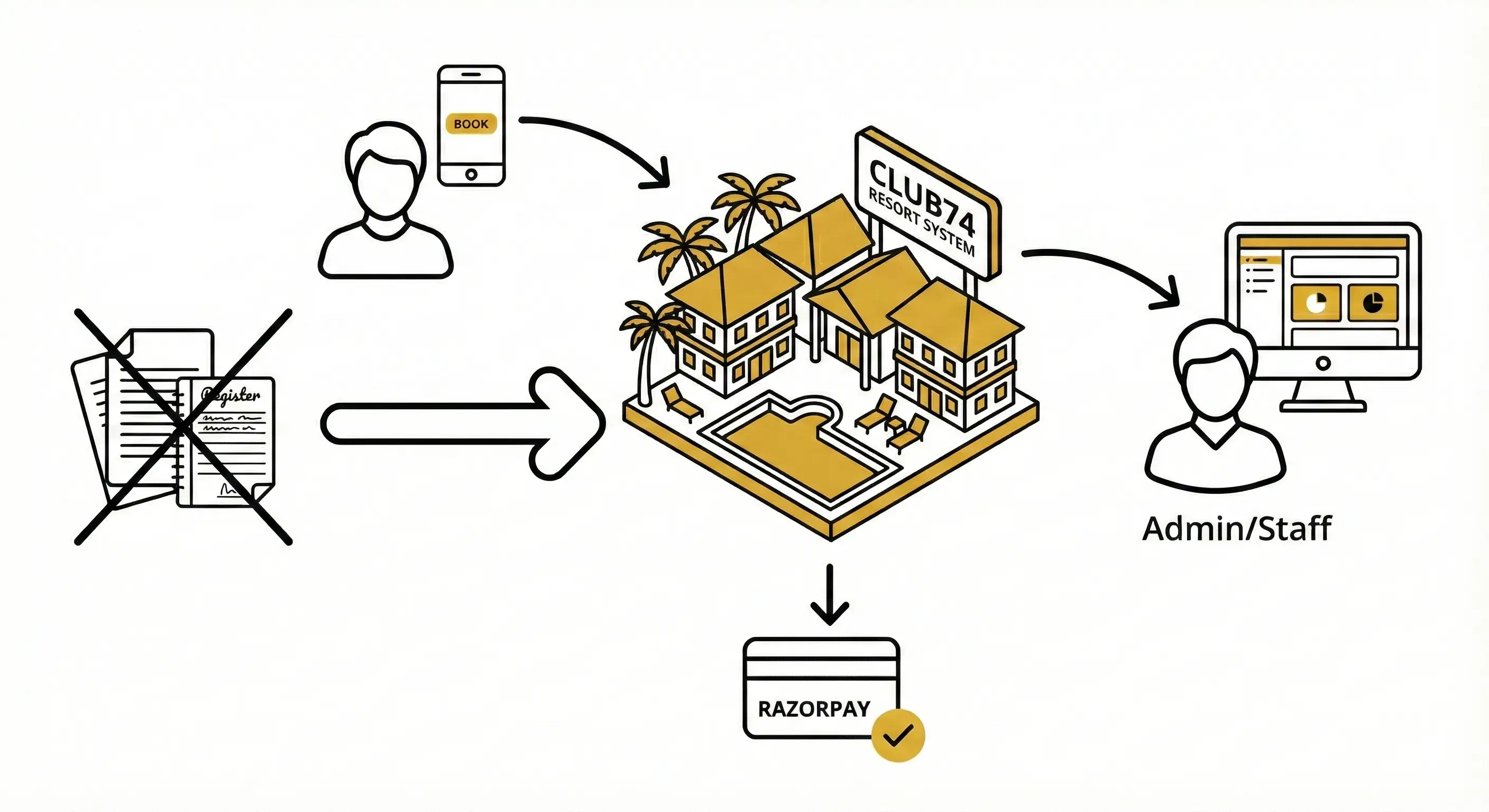
In the era of digital communication, call centres handle massive volumes of customer interactions across various channels, including chat. Managing and analysing these interactions is crucial for enhancing customer service, identifying key issues, and improving overall efficiency. Traditional methods of chat analysis are often limited in scope, failing to capture the nuanced understanding required to address complex customer needs. To meet the growing demands of modern customer service, an advanced, automated approach to classifying and analysing chat interactions is essential.
Problem Statement
Enhancing the Precision and Efficiency of Chat Classification in Call Centres Call centres face significant challenges in accurately classifying and responding to a wide range of customer inquiries. The sheer volume and variety of chats—spanning multiple topics and varying levels of urgency—necessitate a robust classification system. Existing methods often struggle with the complexity of language, including variations in phrasing, spelling, and intent. A sophisticated solution capable of handling multilabel classification, understanding context, and adapting to evolving customer needs was necessary.

Solution
- Solution Implementation:
- Developed and deployed an advanced Natural Language Processing (NLP) pipeline, incorporating techniques such as Term Frequency-Inverse Document Frequency (TF-IDF), stemming, and lemmatization.
- These preprocessing steps were crucial in standardizing the text data, reducing noise, and enhancing the accuracy of the classification tasks.
- Multilabel Classification with AWS Comprehend:
- Used AWS Comprehend for multilabel classification, selected for its scalability and sophisticated machine learning capabilities, including sentiment analysis, entity recognition, and key phrase extraction.
- Leveraged AWS Comprehend to classify each chat with multiple relevant labels, providing a more detailed understanding of customer inquiries and issues.
- Integration of Domain-Specific Vocabulary:
- Integrated domain-specific vocabulary into the model, allowing it to adapt and remain relevant as customer language and interaction trends evolve.
- Utilized AWS Comprehend's deep learning architecture, which enables continuous learning from new data.
- Dynamic Learning and Future Adaptation:
- Our solution is built to adapt to future demands, with a system that automatically updates itself based on new interactions.
- Reduces the need for manual intervention and ensures alignment with the latest advancements in AI and machine learning.

Conclusion
Similar Use Cases
 While advanced chat classification systems are vital for large-scale call centre operations, many businesses benefit from solving simpler communication challenges using AI. At AI Alpha Tech, we also offer lightweight, quick-to-deploy solutions that help streamline operations without requiring deep technical infrastructure.
While advanced chat classification systems are vital for large-scale call centre operations, many businesses benefit from solving simpler communication challenges using AI. At AI Alpha Tech, we also offer lightweight, quick-to-deploy solutions that help streamline operations without requiring deep technical infrastructure.Here are a few examples:
- Sentiment-Based Routing: Automatically detect customer sentiment in real time (positive, negative, or neutral) to prioritize and route chats to the appropriate support tier.
- Auto-Labeling Customer Queries: Tag incoming messages with categories like “Technical Issue”, “Billing”, or “Feedback” to speed up agent response times and improve analytics.
- Chat Summarization: Generate brief summaries of chat histories to help agents understand previous interactions at a glance—ideal for handoffs and follow-ups.
- Spam and Irrelevant Message Filtering: Identify and filter out non-actionable messages such as greetings, repeated follow-ups, or spam—reducing cognitive load on support staff.
- FAQ Mapping and Suggestions: Match user questions to existing FAQs and instantly suggest answers, improving self-service success rates and reducing agent workload.
- Basic Intent Classification: Detect common customer intents like “Request Refund”, “Account Help”, or “Cancel Subscription” to automate initial responses and workflows.


